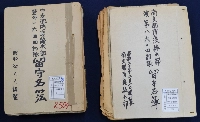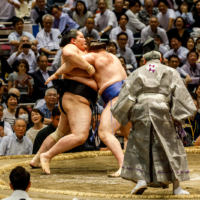The National Archives of Japan has disclosed to researchers the names of members of biological warfare units that the former Imperial Japanese Army had stationed in China.
Researchers hope the disclosure of the name lists will uncover mysteries surrounding such units, of which only Unit 731, which was involved in the development of biological weapons and human experimentation in China, is widely known.
The lists contain the names of members of Unit 1644, which was based in Nanjing, eastern China, and Unit 8604, which was based in Guangzhou, southern China. According to the National Archives, the lists for the two units were transferred to it from the health ministry in fiscal 2024, which ended in March.
Katsuo Nishiyama, professor emeritus at Shiga University of Medical Science, applied for access to the lists this spring.
Compiled in 1945, the lists contain unit members' names, registered domiciles, military ranks and information on their homes. Some 2,000 people are on the list for Unit 1644, while about 850 names are on that for Unit 8604. Both lists are believed to contain the names of all members of the two units.
Unit 731 was based in the outskirts of Harbin in what was then Manchuria, now northeastern China, where Japan had a puppet state. It is said to have conducted studies on biological weapons using plague bacterium.
The list for Unit 1644 has been found to include the names of members transferred from Unit 731.
"This may be a new step toward a full understanding of the actual situation," Nishiyama, 83, said of the disclosure.


















With your current subscription plan you can comment on stories. However, before writing your first comment, please create a display name in the Profile section of your subscriber account page.